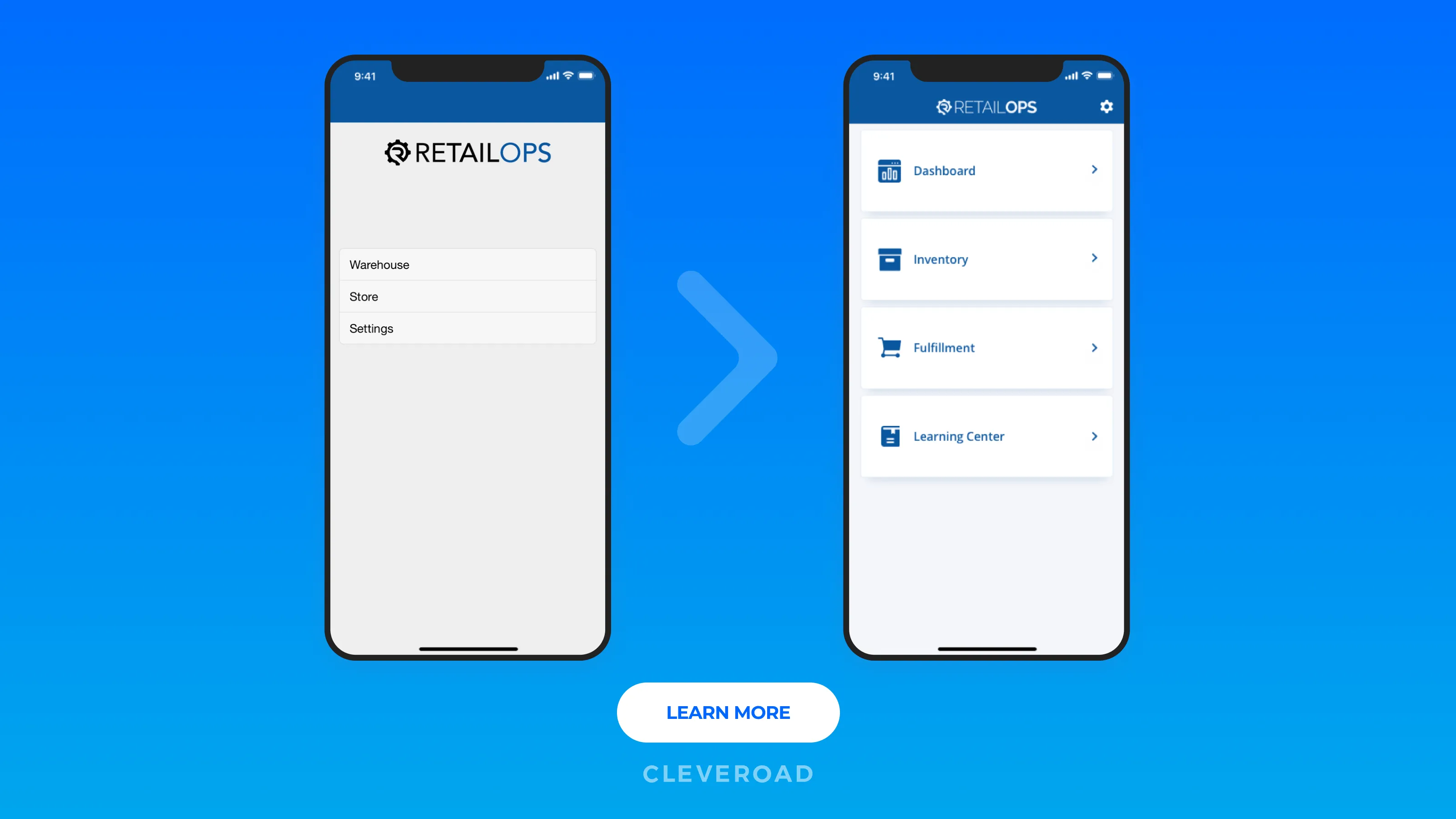7 Approaches to Legacy System Modernization
Updated 07 Jul 2023
15 Min
3045 Views
Legacy systems have lots of drawbacks. They’re difficult to maintain, support, improve, or integrate with new systems. Their maintenance costs a lot — up to $7 to $19+ million per year if we’re talking about a large-scale app.
But it’s not easy to replace an old system. Especially when it handles vital business processes within an organization. Legacy system modernization solves this problem by offering several approaches that won’t disrupt your internal processes.
Before diving deeper, check out when you need legacy software modernization:
- Your existing systems don’t accept and process various data formats from internal software and partner systems.
- You need to customize integrations to link to new applications.
- Your software can’t promptly cope with increased volumes of data from new applications.
- Your existing IT systems are not able to detect data processing errors and fix them expeditiously.
- Legacy IT infrastructure maintenance costs exceed the cost to modernize it.
This guide reviews six common legacy system modernization strategies and lists the steps to follow before the modernization starts.
We’re focusing on software modernization strategies here. If you want to learn more about the reasons for application modernization, check our this topic.
What Is Legacy System Modernization?
When we call a system a legacy one, we usually think of corporate IT apps from the 90s or early 2000s. Probably written in COBOL or Fortran and having an outdated user interface like this one:
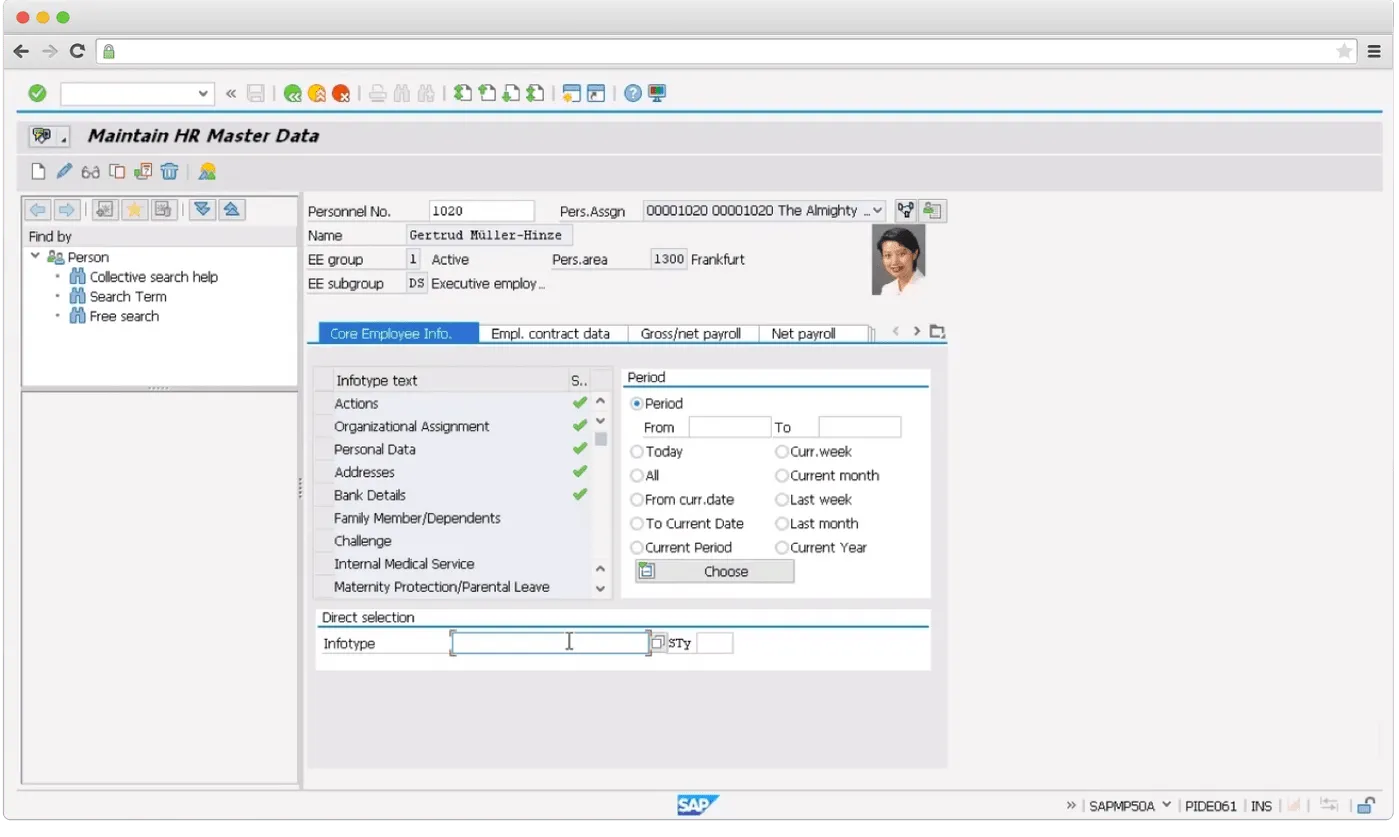
Human resource management module of SAP
But neither age nor programming language defines whether the system is outdated or not. 'Legacy' refers to any piece of software, technology, or system that slows downs or blocks processes in an organization, making it harder to adapt to the changing market dynamics.
Based on this, legacy systems modernization means updating and replacing an outdated or inefficient system, processes and applications—partially or fully.
Let's imagine you're an insurance company running an old ASP.NET application.
The app itself is meant to manage car insurance claims. Currently, it requires adjusters to use their digital cameras to take pictures, load them onto their PCs from SD cards. Then manually upload these pictures to the site.
Works if you have a couple of cases per day. And what if there are hundreds?
You may start by giving staff a mobile app, so they don't have to drag their laptops around. They start taking pictures, and the system automatically uploads them into Google Photos or cloud. Or you can turn to web app development services to get a flexible, easy-to-scale, and accessible from mobile devices solution.
Stefan van der Zijden
research director at Gartner
If you’re faced with a legacy challenge, the best approach depends on the problem you’re trying to solve. Replacement isn’t the only option.
Why Do You Need System Modernization?
Eventually, every organization will certainly require software modernization. It doesn’t mean that you need to modernize the whole system, but you most likely need some kind of update to stay efficient, respond to market changes, and increase ROI. Now, let’s discuss the reasons to look at legacy software modernization.
Maintenance and Support
In most cases, the aging infrastructure maintenance costs exceed its modernization. The expenses of legacy system maintenance operations involve the following:
Updates and changes
Legacy systems are usually backed upon a large codebase with many intricate functionalities. Considering their monolithic nature, there is no way to change or update one system module without affecting other app components. Hence, any modifications required take a slew of time and effort, and none of them cost little.
Infrastructure
Legacy systems infrastructure maintenance costs remain high compared to software modernization. Old data relates to another substantial infrastructure concern. Being dispersed throughout several databases and storage resources, it is challenging to restructure for increased storage space optimization. Collecting and organizing historical data manually to further migrate to a new database is a time and resource-consuming task.
Staff training
Depending on outdated technology, legacy system maintenance demands specific knowledge and expertise. While the programmers who have developed the application might switch to other technologies, it becomes steadily tough to find the needed expertise. Thus, you should consider employee training which may take a tidbit of your budget.
Security
Legacy systems are vulnerable to cyber attacks, malware, and harmful programs. If you had been relying on a software solution for years, the hackers had enough time to learn your code and find its weak points. According to the research, 60% of small businesses go out of business within six months due to cyberattacks. The average cost of cyber attacks to small companies is $25,612, involving monetary loss and brand reputation.
Even if your solution is custom-made and you have resources to support it, adding new fixes implies additional funding in security. While IT security will always be an issue, many vulnerabilities can be addressed by upgrading outdated software and security protocols for enterprise systems.
Integration and Compliance
Modern enterprise-level software relies on third-party APIs to bring added business value. Third-party services (and their APIs) can be employed to monitor transactions, design routes, share data, confirm users, etc. Unlike modern software solutions, legacy systems don’t have integration capability built-in. They require lots of customization and coding time to connect to 3rd party software.
Another reason to consider legacy software modernization is compliance. This is especially critical for heavily-regulated sectors, such as healthcare, politics, and finance. For example, it’s been over years since the General Data Protection Regulation (GDPR) became valid, but many companies still struggle to comply with it.
Lost Business Opportunities
Scaling or improving your IT infrastructure is always associated with expenses. Whether you invest in a new cloud-based solution to drive business growth; or you invest in the maintenance of your current legacy system to keep it performed.
However, investing in obsolete technologies leaves less space for innovations. You cling to outdated software, passing by new opportunities instead of capitalizing on new technologies and business models. This pushes you into the background, giving your competitors more openings to overcome you. Investing in software modernization will allow you to advance with novel digital products primed for better client experience, enhanced backend maintenance, and reduced deployment time.
Organizational Agility and Efficiency
In most cases, businesses relying on legacy systems lack organizational agility to meet market demands. Meanwhile, software modernization is based on agility. Agile methodologies, such as Scrum, Kanban, and Lean Development, speed up the delivery of IT services due to their iterative nature and less paperwork and control involved. Even though legacy systems modernization is a complex process, aligning with modern IT demands is essential. Moreover, old software is less efficient, resulting in reduced employee productivity.
How to Understand That You Need Legacy System Modernization
When is the right time for the modernization of legacy systems? Unfortunately, there is no standard answer since it depends on multiple factors. Firstly, you need to gain a complete and fundamental understanding of your current systems, assess your business performance, and identify whether your ongoing technologies are enough to address your long-term objectives.
To assist you, we’ve prepared five-check questions you should consider before legacy systems modernization:
- Can your existing systems accept and process various data formats from internal software and partner systems?
- Do you need to customize integrations to link to new applications?
- Are you able to promptly cope with increased volumes of data from new applications?
- Can your existing IT systems detect data processing errors and fix them expeditiously?
- Does the outdated infrastructure cost more to maintain than to modernize?
If you’re unsatisfied with any of the answers above, it’s time to think of legacy software modernization.
Modernization of Legacy Systems: Preparation Steps
Modernization does not always require a complete transformation of your IT stack. But what it does require is an honest assessment of where digital transformation is needed.
Before we review legacy software modernization approaches, let’s see what research and planning you need to do to prepare for it.
1. Define Your Goals for Software Modernization
Merely moving your COBOL/CICS environment to Java won't eliminate all the issues. It's better to link modernization efforts to your business and tech goals—scalability, new features, faster time-to-market.
For example, modernizing a billing app and integrating it with a new e-commerce system could boost customer satisfaction and reduce service costs. That's because fewer customers need to contact the business about problems with their bills.
Depending on your industry, market, and goals, you can identify how legacy system modernization could impact the company's revenue, market share, improve customer experience, and many more.
2. Understand the Current State of the System
The next thing is measuring how your current system performs. This will help you create the initial roadmap for modernization and prioritize the apps you need to modernize.
Start asking questions about your system’s infrastructure:
- How resources are being used?
- What chronic resource issues are there?
Performance:
- How is the software working now? What is its normal performance?
- Does the system throw any errors? Which ones?
- How is the end-user experience?
And its impact on your business:
- How does the system’s performance impact your revenue?
- How much time do staff members spend on the app?
- How does the app impact conversion rates or order value?
- Do errors or downtime impact customer service costs?
By having a full view of your system's performance, UI, infrastructure issues, and codebase, you and your team will be able to decide on system modernization strategy.
3. Choose a Modernization Strategy
Now is time to use all the data you've gathered and choose a modernization strategy.
Of course, if you're working with an experienced software development services provider, they'll assess your system and suggest the best-fitting approach. Still, it's always better to get acquainted with all the options.
These are six approaches to legacy system modernization. But only three—rehost, replatform, and refactor—involve modernizing.
Let’s review all the approaches in more detail.
Check out our guide on How to Choose Software Development Company and Not to Fail
Software Modernization Strategies
Although rewriting or replacing may be the first thing that comes to mind, in fact, legacy software modernization should be done on a case by case basis. Therefore, planning modernization, it’s imperative to scrutinize all the system nuances upfront.
The analysis must include:
- Existing IT architecture
- Technology
- Functionality
- Risks
- Complexity
- Cost
The final choice of software modernization strategy will depend on what issues you want to address, as well as business/performance requirements.
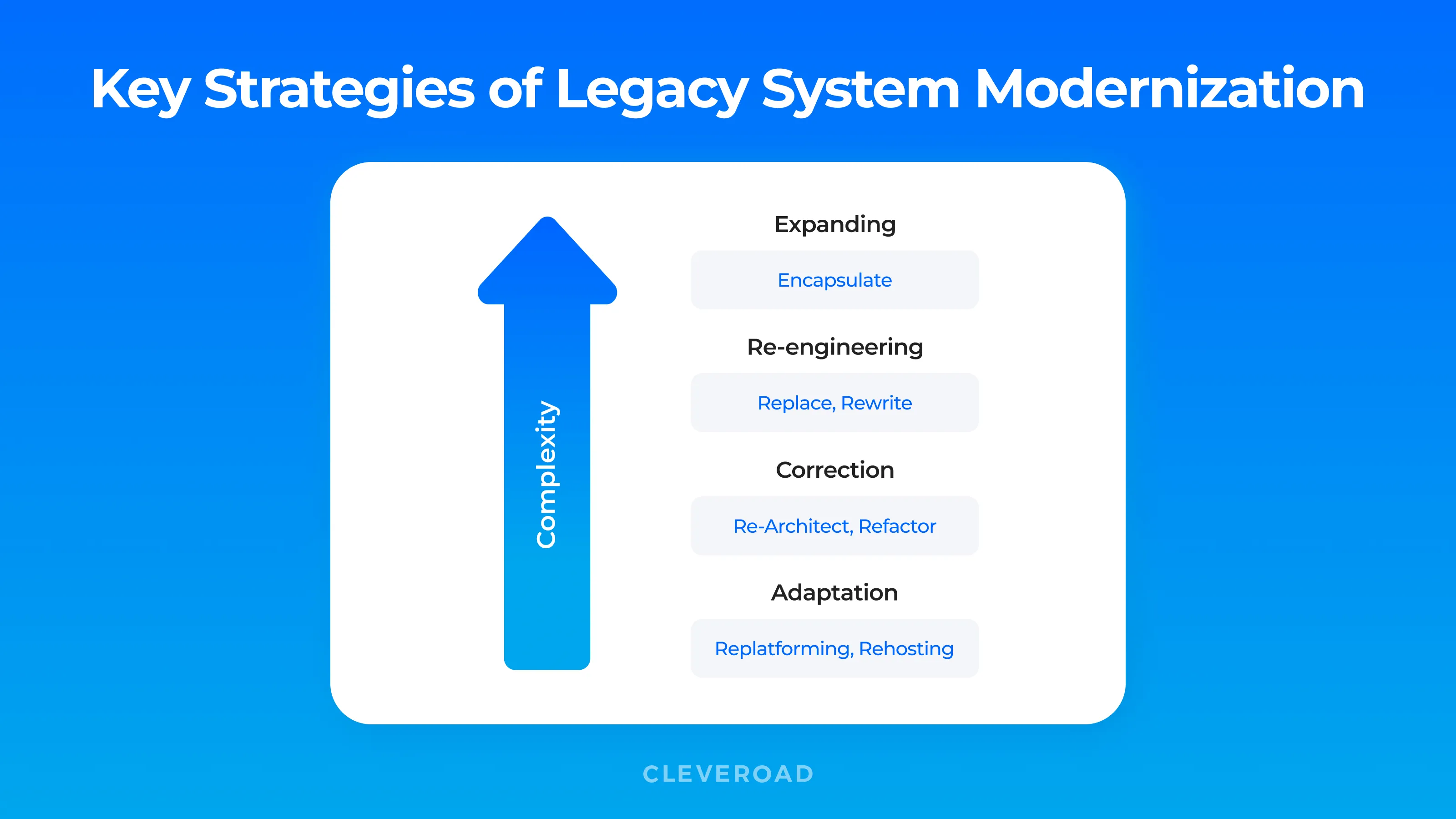
Legacy software modernization approaches
Encapsulating
Encapsulating software implies the usage and expanding the application features by enclosing its data and functions, making them accessible as a service via an API. Encapsulating a system via 3rd party APIs restricts access to the system to match the data and workflow of modern systems interacting with it. You might, for example, integrate the system into a general UX platform via an API, so its information is shown in a format that users easily interpret to provide optimal UX.
The benefits of encapsulation are that it handles the short-term pain of poor UX and makes a legacy system appear to perform like a modern one. The problem is that it doesn't address the primary concern with a legacy system: maintenance overhead.
Rehosting
Replacing means switching to another package solution that matches your business requirements. Sometimes it's more effective to switch to another system than modernize the current one.
In case of replacing, you can't reuse the existing business logic, though,—but some level of re-engineering, customization, and rewriting business logic may be involved.
Still, customizing a package can be very complex—and very risky. Just like rewriting, it should only be considered when maintaining an old legacy system becomes more difficult due to staff or hardware limitations.
Replacing
Stands for moving the system to a new physical, virtual, or cloud infrastructure without any changes in code, features, or functions. For example, it may make sense to move an old system to a cloud or SQL-based environment.
- Migrating to cloud makes the system more flexible than on-site hardware and improves data security, stability, and continuous updates.
- Moving to SQL-based x86 architecture systems results in lower purchase costs and less strict requirements to cooling and space.
The rehosting strategy is faster than re-engineering (which may take years to finish) and comes with lower cost and fewer risks. Yet it keeps the business logic intact, which means the system works in the same way as it did before.
Replatforming
Developers leave the software nearly as it is, preserving its functionality but adapting to a new platform. The goal here isn’t to completely rebuild apps—we have the rebuild approach for that. Instead, systems are altered until they can run in the target environments like cloud-ones.
Developers take an existing system component and move it to a managed service (like a database service), making no changes to the business logic. For example, it may imply the switch from commercial databases to horizontally scalable open-source data stores and services.
Refactoring
Optimize existing code on the backend without changing front end behavior or functionality. Refactoring is done to get rid of tech problems, improve the component’s features and structure. By re-coding some parts of the current system, companies take full advantage of cloud-native features—and achieve max cost efficiency in the cloud.
Re-Architecting
Re-architecting stands for fully changing the code of the app to move it to another architecture. By altering the code, you can fully exploit new and better capabilities of the existing platform. For example, you can achieve that by moving away from old monolithic to modern microservices architecture.
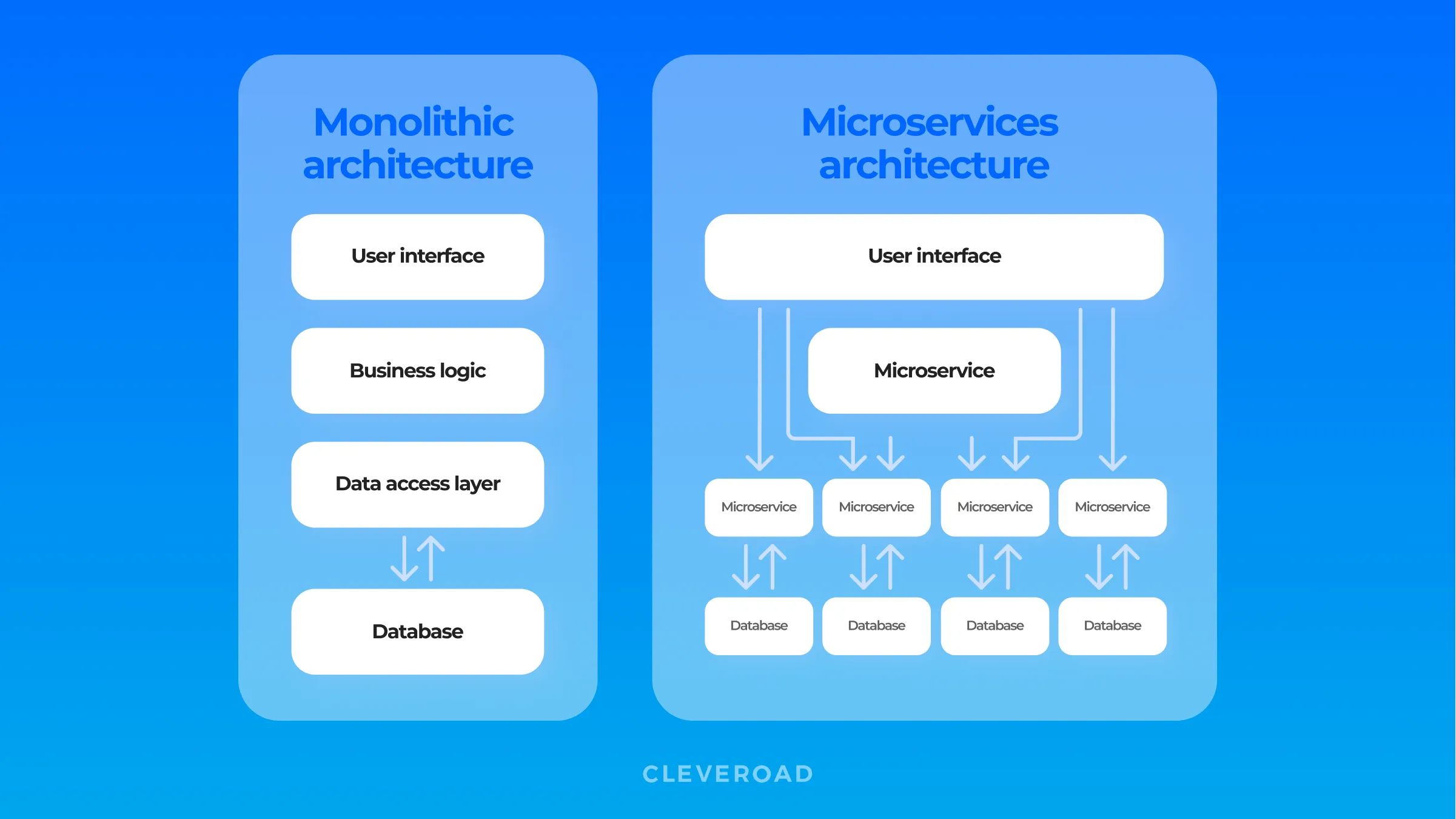
Legacy system modernization approaches: moving from monolithic arch to microservices
This may be a good idea, as, according to IDC IT predictions, 90% of all new apps will feature microservices architectures by 2022. They claim microservices to improve the ability to design, debug, update, and leverage third-party code.
Rewriting (Rebuilding, Redesign)
Rewriting means building a new system from scratch but with similar functions.
It may be a good option when your customers want more than the current system can provide. The best justification of this system modernization strategy is when the costs of maintaining an old system have become higher than the cost of rebuilding it.
For example, your team may take a monolithic app and replicate its functionality as a cloud-native microservice running in a cloud-native environment.
While all these approaches differ, they have at least one thing in common—they require a close look at your interconnected components, systems, and applications. That's because you cannot update one component in a legacy system ignoring all the others.
Challenges of Legacy Systems Modernization
The modernization of legacy systems is a complex process where the emergence of a set of complexities is ordinary. Therefore, when you decide to upgrade your software, you should meet them.
Balancing Risk
Before upgrading your legacy system, evaluating all the financial, security, and operational risks is crucial. However, in some cases, it may be tricky to define the checkpoints to make decisions and reach an agreement among stakeholders.
Data Management Restrictions
Successful legacy system modernization is based on accessing the existing data. That’s why you need to clean up the data and upgrade the administration rules to prevent inefficient and useless information from getting into a modernized system.
Business Transformation Resistance
Legacy software modernization extends beyond IT, resulting in increased business processes and efficiency. However, without thorough planning, rebuilding operations and retraining employees may affect the total productivity and team morale if the company resists the modifications.
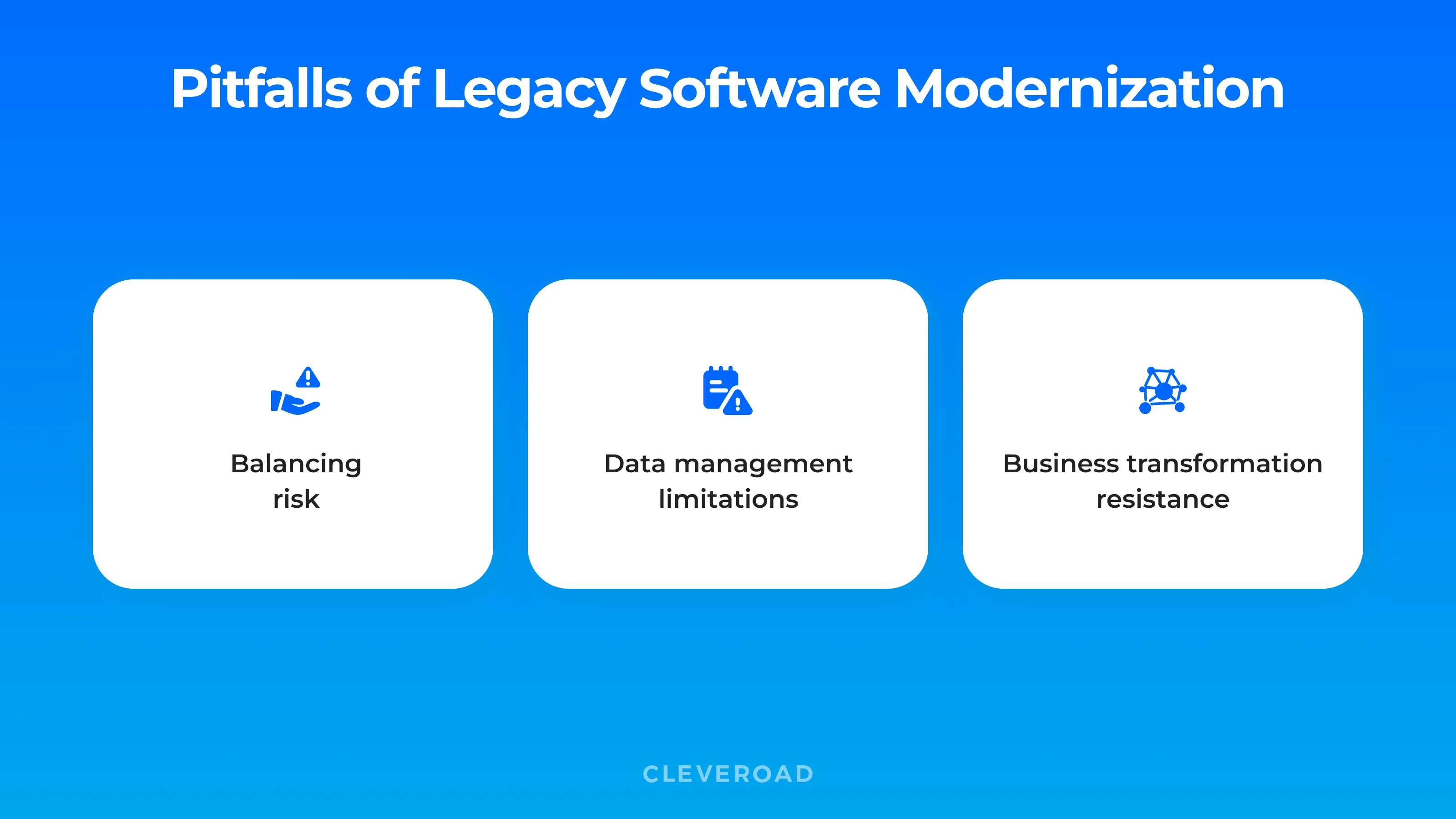
Challenges of legacy systems modernization
Legacy Software Modernization With Cleveroad
The technology world shifts rapidly, dictating the game rules for business owners. Therefore, businesses must move quickly and regularly update their IT systems to stay on the edge of technology and be ahead of the contenders. However, successful modernization implementation is possible only with the support of an experienced IT vendor. And Cleveroad professionals are ready to breathe new life into your project.
Cleveroad is a specialized software development company with 10+ years of experience modernizing legacy software solutions across multiple domains. In software development since 2011, our experts will help you throughout the app modernization cycle, from creating an optimal modernization strategy to delivering consistent modernization implementation.
Collaborating with us, you’ll obtain:
- A broad scope of modernization services, including application modernization consulting, a legacy to cloud migration, application reengineering, and application recoding.
- Industry-wide experience — fintech, logistics, healthcare, retail, education, etc. We help rejuvenate enterprise software to increase the efficiency of any business.
- We ensure complete testing coverage and comprehensive monitoring to ensure modernized software runs as required and doesn’t interrupt your business processes.
- A team of certified, security-oriented professionals to guarantee the quality of provided services.
- A row of flexible cooperation models for your convenience.
- A thorough consultation with our Solution Architects as to the project deployment.
To demonstrate our expertise in practice, let us introduce our latest case regarding legacy systems modernization.
One of the projects we’ve modernized is the SaaS retail platform — RetailOps. We rewrote the iOS app from Cordova to Swift, finalized the app's features, and added new functionality.
While our Design team completely changed the UI/UX design of the app. We used the right contrast color scheme to make the app accessible for any employee, including workers with low vision and color vision issues.
Another example of legacy system modernization was an internal CRM software we worked on (the project’s under NDA).
Initially, the CRM system was written in out-of-date PHP, and owners could not add new functionality and maintain the system, so we rewrote it from PHP to JS.
Our clients got a stable and customizable CRM system to use for internal processes. The solution is scalable, so our clients can quickly expand the system as their business grows.
Your system needs modernization?
We’ll help you choose an approach that won’t disrupt your internal processes
Legacy system modernization stands for updating and replacing an outdated or inefficient system, processes, and applications—either partially or fully.
There are six common approaches:
- Rehosting. Moving the system to a new physical/cloud infrastructure.
- Replatforming. Leaving the software nearly as it is, but adapting to a new platform.
- Refactoring. Optimizing existing code on the backend without changing its front end part.
- Re-architecting. Entirely changing the code of the app to move it to another architecture.
- Rebuilding. Building a new system from scratch but with similar functions.
- Replacing. Switching to another package solution that meets your business requirements.
Before the modernization starts, you should do some research and planning to prepare for it.
- Define your goals for modernization—scalability, new features, faster time-to-market.
- Understand the current state of the system—how the software's working now? Does it throw any errors?
- Pick the best-fitting modernization strategy—rewriting, rehosting, re-architecting, or maybe replacing.
There are three reasons:
- High maintenance costs.
- Security threats.
- Limited business opportunities.
Check more details about the reasons for application modernization.
Legacy systems have lots of drawbacks. They're difficult to maintain, support, improve, or integrate with new systems. Their maintenance costs a lot—up to $7 to $19+ million per year if we're talking about sophisticated, large-scale systems.
There are six common strategies:
- Rehosting
- Replatforming
- Refactoring
- Re-architecting
- Rebuilding
- Replacing

Evgeniy Altynpara is a CTO and member of the Forbes Councils’ community of tech professionals. He is an expert in software development and technological entrepreneurship and has 10+years of experience in digital transformation consulting in Healthcare, FinTech, Supply Chain and Logistics
Give us your impressions about this article
Give us your impressions about this article
Comments
4 commentsGood post for beginners! Modernization is a complex topic for me as I used to get lost in tech details. By the way, I liked what you did to that SaaS app - looks very well after re-design
It's a better choice to modernize an old system since it is a burden to maintain old code daily.
complete software rewrites are a problem and quite never are destined to end up well. sometimes its better to invest into bringing in a consultant on these issues as you've said
well-explained, thank u

